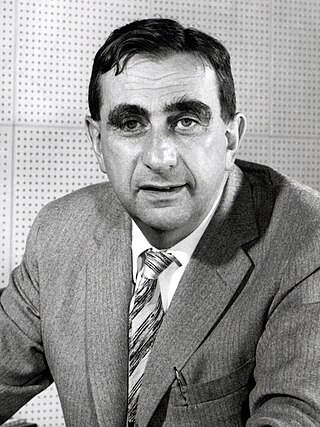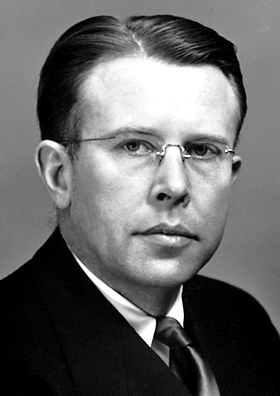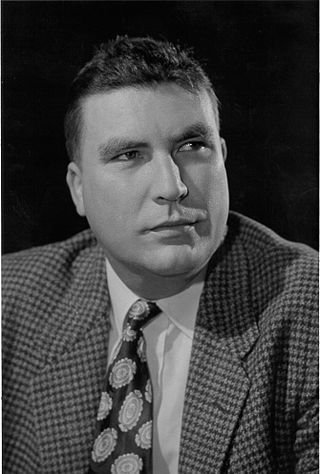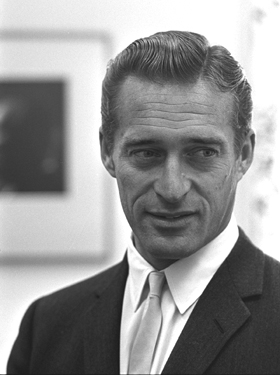
Edward Teller was a Hungarian-American theoretical physicist and chemical engineer who is known colloquially as "the father of the hydrogen bomb" and one of the creators of the Teller–Ulam design. Teller was known for his scientific ability,difficult interpersonal relations,and volatile personality.

Los Alamos National Laboratory is one of the sixteen research and development laboratories of the United States Department of Energy (DOE),located a short distance northwest of Santa Fe,New Mexico,in the American southwest. Best known for its central role in helping develop the first atomic bomb,LANL is one of the world's largest and most advanced scientific institutions.
Lawrence Livermore National Laboratory (LLNL) is a federally funded research and development center in Livermore,California,United States. Originally established in 1952,the laboratory now is sponsored by the United States Department of Energy and administered privately by Lawrence Livermore National Security,LLC.

Ernest Orlando Lawrence was an American nuclear physicist and winner of the Nobel Prize in Physics in 1939 for his invention of the cyclotron. He is known for his work on uranium-isotope separation for the Manhattan Project,as well as for founding the Lawrence Berkeley National Laboratory and the Lawrence Livermore National Laboratory.

Herbert Frank York was an American nuclear physicist of Mohawk origin. He held numerous research and administrative positions at various United States government and educational institutes.

Sidney David Drell was an American theoretical physicist and arms control expert.

Curtis Bruce Tarter is an American theoretical physicist. He was the director of the Lawrence Livermore National Laboratory from 1994-2002. As director emeritus he recently published the first comprehensive history of the laboratory.

George H. Miller Ph.D. served as director of the Lawrence Livermore National Laboratory (LLNL) from 2007 until 2011. Dr. Miller,an employee of the Laboratory for 34 years,replaced Michael Anastasio,who left LLNL to head Los Alamos National Laboratory.

Darleane Christian Hoffman is an American nuclear chemist who was among the researchers who confirmed the existence of seaborgium,element 106. She is a faculty senior scientist in the Nuclear Science Division of Lawrence Berkeley National Laboratory and a professor in the graduate school at UC Berkeley. In acknowledgment of her many achievements,Discover magazine recognized her in 2002 as one of the 50 most important women in science.

John C. Browne is an American physicist.

Edward Moses is an American physicist and is the former president of the Giant Magellan Telescope Organization. He is a past principal associate director for the National Ignition Facility &Photon Science Directorate,where he led the California-based NIF,the largest experimental science facility in the US and the world's most energetic laser,that hopes to demonstrate the first feasible example of usable nuclear fusion.
Richard Freeman Post was an American physicist notable for his work in nuclear fusion,plasma physics,magnetic mirrors,magnetic levitation,magnetic bearing design and direct energy conversion.

Conrad Lee Longmire was an American theoretical physicist who was best known as the discoverer of the mechanism behind high-altitude electromagnetic pulse.

Charles F. McMillan is an American nuclear physicist and served as the 10th director of the Los Alamos National Laboratory. His appointment was effective June 1,2011. He succeeded Michael R. Anastasio. On September 5,2017,McMillan announced he would be leaving the director position at the end of the year.

John Stuart Foster Jr. is an American physicist,best known as the fourth director of Lawrence Livermore National Laboratory and as Director,Defense Research and Engineering under four Secretaries of Defense and two Presidents.

Anthony L. Peratt is an American physicist whose most notable achievements have been in plasma physics,plasma petroglyphs,nuclear fusion and the monitoring of nuclear weapons.

Njema Frazier is a nuclear physicist at the Department of Energy's National Nuclear Security Administration (NNSA) in Washington,D.C.
Dmitri Dmitriyevich Ryutov is a Russian theoretical plasma physicist.

Kimberly Susan Budil is an American physicist who is the 13th and current director of Lawrence Livermore National Laboratory,making her the first woman to hold this position. She completed her bachelor's degree in physics from the University of Illinois Chicago,and her master's and doctorate in applied science from the University of California,Davis. She collaborated with Nobel laureate Donna Strickland,and made significant contributions to the field of high-power,ultra-fast lasers. Starting her career at Lawrence Livermore National Laboratory in 1987,she held various roles across government departments,including the Department of Energy and the Department of Defense. In 2014,she managed relations between the University of California's campuses and the three Department of Energy labs it manages. Budil,who was made a fellow of the American Physical Society in 2019,has also been a prominent advocate for women in science.
Arthur Kent Kerman was a Canadian-American nuclear physicist,a fellow of the American Physical Society,Fellow of the American Academy of Arts and Sciences,and Fellow of the New York Academy of Sciences. He was a professor emeritus of physics at Massachusetts Institute of Technology’s Center for Theoretical Physics (CTP) and Laboratory for Nuclear Science He was known for his work on the theory of the structure of nuclei and on the theory of nuclear reactions.
















